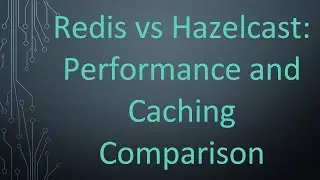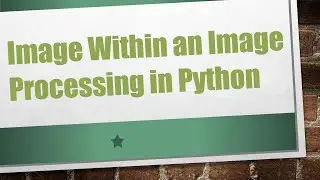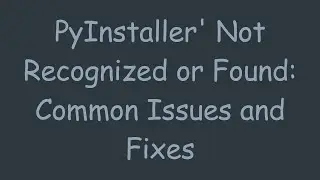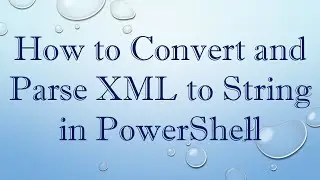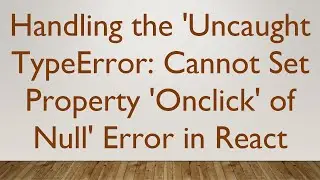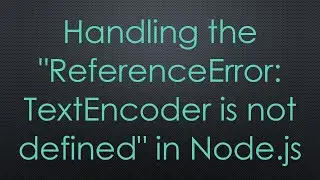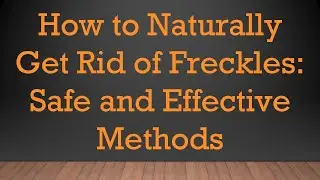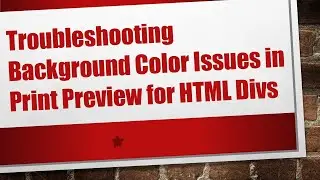Troubleshooting: How to Pass a Variable from HTML to Google Apps Script with Ease
на канале: vlogize
Learn how to successfully pass a variable, like `username`, from your HTML template to Google Apps Script using clear JavaScript functions. Follow our step-by-step guide to resolve common issues.
---
This video is based on the question https://stackoverflow.com/q/66897542/ asked by the user 'standalonePUP' ( https://stackoverflow.com/u/15442017/ ) and on the answer https://stackoverflow.com/a/66926861/ provided by the user 'standalonePUP' ( https://stackoverflow.com/u/15442017/ ) at 'Stack Overflow' website. Thanks to these great users and Stackexchange community for their contributions.
Visit these links for original content and any more details, such as alternate solutions, latest updates/developments on topic, comments, revision history etc. For example, the original title of the Question was: Trouble passing a variable to HTML from Google Apps Script and then back to GS again
Also, Content (except music) licensed under CC BY-SA https://meta.stackexchange.com/help/l...
The original Question post is licensed under the 'CC BY-SA 4.0' ( https://creativecommons.org/licenses/... ) license, and the original Answer post is licensed under the 'CC BY-SA 4.0' ( https://creativecommons.org/licenses/... ) license.
If anything seems off to you, please feel free to write me at vlogize [AT] gmail [DOT] com.
---
Troubleshooting: How to Pass a Variable from HTML to Google Apps Script with Ease
In the world of web applications, seamlessly transferring data between components is crucial for enhancing user interactions. If you're using Google Apps Script and HTML templates, you might face challenges passing variables from your HTML to the script and vice versa. A common issue arises when trying to send a variable, such as username, back to the Google Apps Script when clicking a button.
In this post, we'll explore a method to successfully pass that variable using a clear, structured solution.
Understanding the Problem
When working with Google Apps Script and HTML, often you need to:
Retrieve parameters from the URL of a web app.
Pass those parameters through an HTML template.
Send a parameter back to your Google Apps Script when a user interacts with the interface, such as clicking a button.
In this case, the variable username did not pass back correctly to the function defined in the Google Apps Script. Let's see how to solve this issue step by step.
Step-by-Step Solution
Step 1: Retrieve the Parameter in Google Apps Script
First, you need to ensure that you're correctly retrieving the username parameter from your URL. Here's the relevant function:
[[See Video to Reveal this Text or Code Snippet]]
Step 2: Set Up Your HTML Template
In your HTML file, you want to display the username and set up a button that will eventually send this data back to the Google Apps Script. Here's how your basic HTML should look:
[[See Video to Reveal this Text or Code Snippet]]
Step 3: Pass the Variable Back to Google Apps Script
Next, add a script to manage the button click event and pass the username back to the Google Apps Script. Here’s the corrected version to ensure username is processed properly:
[[See Video to Reveal this Text or Code Snippet]]
Explanation of the Final Code
var username = <?= json_encode(username); ?>;: This line ensures that the username variable is available and correctly passed as a JSON object, which is important for JavaScript data types to be accurate.
Event Listener: document.getElementById("approveTC").addEventListener("click", approveTC); attaches the function to be called when the button is clicked.
Function Call: The google.script.run.timecardApproved(username); is how we send the username variable back to the server-side function timecardApproved, which processes it accordingly.
Conclusion
Passing variables between Google Apps Script and HTML might seem confusing at first, but with the right code structure and a clear understanding of how each component interacts, you can navigate through these issues. By following the steps outlined above, you should be able to pass variables seamlessly and enhance the functionalities of your web app.
If you encounter further difficulties or wish to share your solutions, feel free to leave a comment below!









